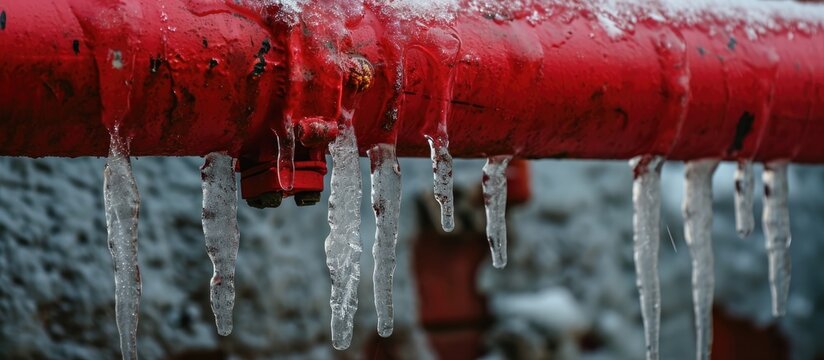Protecting Against Frozen Plumbing: Effective Methods for Winter
Protecting Against Frozen Plumbing: Effective Methods for Winter
Blog Article
The publisher is making several good pointers relating to Helpful Tips to Prevent Frozen Pipes this Winter overall in this content followed below.

Winter can ruin your pipes, specifically by freezing pipelines. Right here's exactly how to avoid it from taking place and what to do if it does.
Introduction
As temperature levels drop, the threat of icy pipelines boosts, potentially resulting in pricey repair services and water damages. Comprehending how to avoid frozen pipelines is critical for homeowners in cold climates.
Avoidance Tips
Protecting prone pipelines
Cover pipes in insulation sleeves or utilize heat tape to shield them from freezing temperature levels. Focus on pipelines in unheated or external areas of the home.
Home heating techniques
Keep interior areas appropriately heated, especially areas with plumbing. Open cupboard doors to allow warm air to distribute around pipelines under sinks.
Just how to identify frozen pipes
Try to find reduced water flow from taps, uncommon odors or sounds from pipelines, and noticeable frost on revealed pipes.
Long-Term Solutions
Structural modifications
Think about rerouting pipes far from exterior wall surfaces or unheated areas. Add added insulation to attics, cellars, and crawl spaces.
Upgrading insulation
Buy high-grade insulation for pipes, attic rooms, and walls. Correct insulation helps keep constant temperature levels and minimizes the danger of frozen pipelines.
Securing Outside Plumbing
Yard hose pipes and outdoor taps
Disconnect and drain garden hoses before wintertime. Mount frost-proof spigots or cover outdoor taps with protected caps.
Comprehending Icy Pipelines
What creates pipelines to ice up?
Pipelines ice up when exposed to temperatures below 32 ° F (0 ° C) for expanded periods. As water inside the pipes freezes, it broadens, taxing the pipeline wall surfaces and potentially triggering them to break.
Threats and damages
Frozen pipes can lead to water interruptions, building damage, and pricey repair services. Ruptured pipes can flooding homes and create considerable architectural damage.
Indicators of Frozen Pipes
Recognizing frozen pipelines early can prevent them from rupturing.
What to Do If Your Pipelines Freeze
Immediate actions to take
If you believe frozen pipes, maintain taps open to relieve pressure as the ice melts. Make use of a hairdryer or towels soaked in warm water to thaw pipes gradually.
Verdict
Stopping icy pipelines calls for aggressive measures and fast feedbacks. By recognizing the causes, signs, and safety nets, property owners can safeguard their pipes during cold weather.
5 Ways to Prevent Frozen Pipes
Drain Outdoor Faucets and Disconnect Hoses
First, close the shut-off valve that controls the flow of water in the pipe to your outdoor faucet. Then, head outside to disconnect and drain your hose and open the outdoor faucet to allow the water to completely drain out of the line. Turn off the faucet when done. Finally, head back to the shut-off valve and drain the remaining water inside the pipe into a bucket or container. Additionally, if you have a home irrigation system, you should consider hiring an expert to clear the system of water each year.
Insulate Pipes
One of the best and most cost-effective methods for preventing frozen water pipes is to wrap your pipes with insulation. This is especially important for areas in your home that aren’t exposed to heat, such as an attic. We suggest using foam sleeves, which can typically be found at your local hardware store.
Keep Heat Running at 65
Your pipes are located inside your walls, and the temperature there is much colder than the rest of the house. To prevent your pipes from freezing, The Insurance Information Institute suggests that you keep your home heated to at least 65 degrees, even when traveling. You may want to invest in smart devices that can keep an eye on the temperature in your home while you’re away.
Leave Water Dripping
Moving water — even a small trickle — can prevent ice from forming inside your pipes. When freezing temps are imminent, start a drip of water from all faucets that serve exposed pipes. Leaving a few faucets running will also help relieve pressure inside the pipes and help prevent a rupture if the water inside freezes.
Open Cupboard Doors
Warm your kitchen and bathroom pipes by opening cupboards and vanities. You should also leave your interior doors ajar to help warm air circulate evenly throughout your home.
:strip_icc()/snow-outdoor-faucet-pipes-4af65d1e5e904fb1aa7bf74071fe5d89.jpg)
We had been shown that article on How To Avoid Freezing Pipes from a pal on another domain. Enjoyed reading our piece of writing? Please quickly share it. Let another person discover it. Thanks for taking the time to read it.
Click Here Report this page